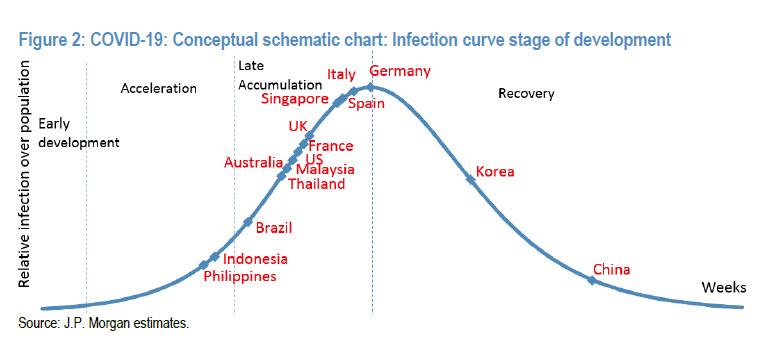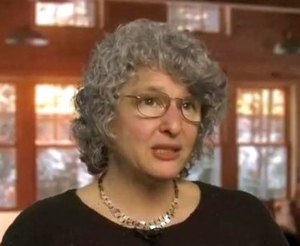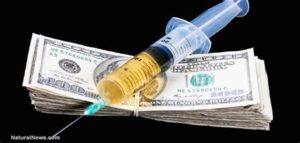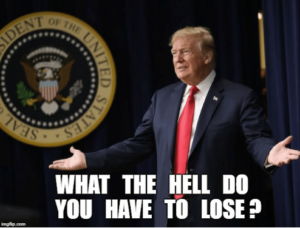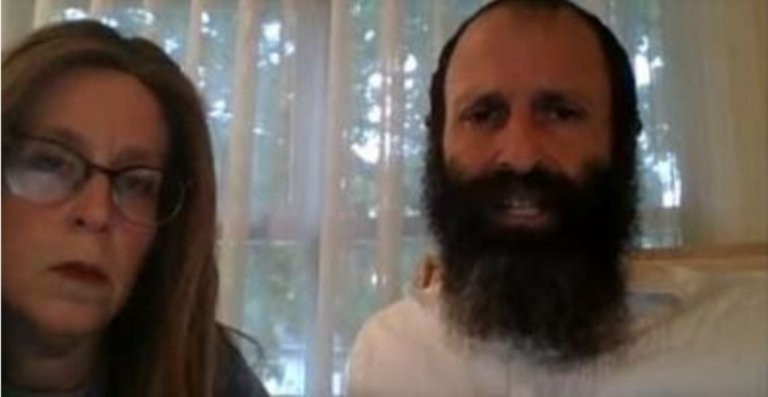Coronavirus: Mortality Rates, Hidden Information, Withheld Drugs. Part 1
Meryl Nass, MD
1. Coronavirus by the numbers
Today, the United States has over half a million people who have tested positive for Coronavirus. Today, the United States became the nation with the highest death toll in the world from the novel coronavirus. Twenty thousand US deaths. In the space of 6 weeks we have gone from zero to 2,000 deaths per day. Yet most of our country has yet to experience the wrath of this virus. My county has only 4 known cases, and my state has had only 17 deaths… so far.
After exposure to the coronavirus, it takes on average 5-6 days, but sometimes up to 2 weeks, to become ill. Then, if you are one of the unlucky 20% who become seriously ill, in another week you may crash with respiratory failure. It takes about another two weeks for roughly half of the seriously ill to die.
Death rates therefore trail exposure by about a month. Case rates will trail exposure by 1-2 weeks. We have been quarantining ourselves to a degree (first a little then a lot) for 4 weeks now. Case rates and deaths should be leveling off, and they appear to be. That horrifying exponential curve, in which deaths were doubling every 2-3 days, has begun to flatten its trajectory. That is good, but it is just the first step in dealing with the emergency this virus threw at us. Quarantining the public was the only possible plan A to minimize deaths. But it seems our leaders have no Plan B to return us to normality. More on this in Part 2.
The novel Coronavirus (its official name is SARS-CoV-2) is the newer and nastier version of its 2003 cousin, SARS-CoV: same 11% mortality rate, same high environmental stability, but is much more infectious. Let me repeat that: the current pandemic is the second iteration of SARS, and this virus has the same official name as SARS, except that a 2 has been added to indicate it is #2.
Both SARS-1 and SARS-2 have an incubation period of about 6 days, and an Rzero estimate about 2.7 (which is the number of people each person with the disease is likely to infect). The Rzero for SARS-2 should drop considerably with social distancing. Each virus causes pneumonia, but can also infect the gastrointestinal tract and the upper respiratory tract. Each frequently induces a cytokine storm and ARDS. SARS-2 has been noted to cause heart failure via infection of heart muscle.
2. What about those mortality rates?
According to one of the excellent SARS-2 tracking websites, the SARS-2 mortality rate is 7%, calculated by the number of people in the world who tested positive (the denominator), and the number who have died from SARS-2 (the numerator). The problem with this method is that most cases were diagnosed recently, and have not had the illness long enough for us to know whether they will survive or succumb. Looking at the US alone, using this same method of calculation, the US mortality rate is 3.75%. But especially in the US, most cases were only recently diagnosed. The other problems with this method is that testing has been limited, reducing the potential number of identified cases. The other problem is that multiple tests are being used, some without prior FDA review, and their sensitivity and specificity are unknown. Various tests are being used in the rest of the world, with some countries performing widespread testing and others restricting testing.
Given those caveats, let’s look at 4 European countries where the pandemic spread earlier than in the US, and are therefore farther along the epidemic curve. Theoretically, their mortality rates will be more accurate. Using the identical method as above, one calculates a mortality rate for Italy of 12.8%. Spain’s rate is 10.2%. France’s rate is 10.6%. The UK’s mortality rate is 12.5%.
3. New York, our harbinger
If you zero in on New York, our worst-hit state, at first glance it does not seem too awful. Total positive tests: 170,512 and total deaths 7,844, for a 4.6% mortality rate.
How many people required hospitalization? 33,159 cumulatively, with 18,569 currently hospitalized. The recovered are said to total 14,590. Coronavirus cases in New York currently fill about 1/3 of the 53,000 hospital beds NY had at baseline, although they fill a disproportionate number of ICU beds. Of those hospitalized in NY, 27% are in ICUs.
If you compare the number who have died to the sum of the recovered plus the deceased, the numbers (or perhaps the benefits from treatment) do not look very good: 30% of those who were hospitalized for coronavirus died, while 70% recovered. If 20% of those with coronavirus require hospitalization, as claimed, and 30% of those hospitalized die, and no one died at home, there would be a mortality rate of 6%. However, NYC reported a spike in those dying at home.
What does all this mean? In my opinion, the medical care in Western Europe is at least equal to that in the US. While we ought to benefit from the knowledge gained by those treating this disease first in Asia and Europe, it does not seem that what we have learned has made much dent on mortality. I anticipate we will see mortality rates equaling those in Western Europe over the next few weeks.
- Where is Dr. Fauci getting his data from when he predicts a 1% mortality rate?
4. Medical mysteries. Doctors around the world are talking to each other, but strategies to improve survival remain elusive, or restricted
Our world is now 4 months into this pandemic. Over 100,000 people have died, and hundreds of thousands have been hospitalized.
- How can it be that we know so little about the proper medical management of this disease?
- Why isn’t information on drug trials available yet?
- China reportedly had 260 trials. Europe has had more. Many different drugs have been tried.
- Where are the data?
- How can it be that most of those who are placed on ventilators do not come off alive?
- Why are some manufacturers allowed to have a lock on patents and prices, when the cost to manufacture most of the most promising drugs is minimal?
5. We want drugs now, but they want a vaccine later
How can it be that Anthony Fauci is indignant about using hydroxychloroquine (a drug costing about $1.00 per patient course) on potentially fatal cases because there is “only” anecdotal and lab evidence of success, yet he is thrilled to sponsor a clinical trial of coronavirus vaccine in humans before it has even gone through animal testing, as required by law?
- Why does he have such a high evidentiary bar in the first place, and such a low bar in the second?
- Why are the doctors leading the US’ coronavirus efforts unable to do more than spout atitudes and pay homage to disease models that fail to include accurate data?
- Why do they sound more like politicians than doctors?
- Is anyone looking out for the public’s health today, rather than going gaga over a vaccine that may or may not be available in a year or two?
- A vaccine which may or may not actually enhance the disease’s virulence in recipients? According to Nature:
“With SARS-CoV-2 vaccines, researchers’ main safety concern is to avoid a phenomenon called disease enhancement, in which vaccinated people who do get infected develop a more severe form of the disease than people who have never been vaccinated. In studies of an experimental SARS vaccine reported in 2004, vaccinated ferrets developed damaging inflammation in their livers after being infected with the virus.”
New vaccines are highly profitable. Gardasil, Prevnar and the MMRV vaccine each sell for over $200 per dose, and each recipient requires multiple doses. What might a successful coronavirus vaccine cost? Does the potential for huge profits from a new vaccine versus the limited profitability of old (and mostly generic) drugs have anything to do with Tony Fauci’s preferences? Why are the mass media breathless over a corona vaccine, while shouting dire warnings of the dangers of hydroxychloroquine?
6. Dangerous drugs?
Do you want to discuss truly dangerous drugs? Consider SSRI antidepressants. They are associated with a boatload of suicides, such that they are labelled with “black box” warnings, used for only the riskiest drugs. Yet according to NBC, 12% of Americans take antidepressants, most of which are SSRIs. Are our public health officials using the media to warn us about this major public health risk?
Chloroquine, and the related drug hydroxychloroquine, are naturally associated with some risk, as are all drugs. But they have a very interesting benefit: they kill SARS-2. The FDA approves and labels drugs based on their risks and benefits. Thus a cancer drug, which may kill you, is approved because the cancer may also kill you, and FDA reasons that a greater level of risk is warranted under the circumstances.
The primary risks of hydroxychloroquine are cardiac arrhythmia (not common, and generally only a problem when there is an interaction with other drugs the patient takes) or ophthalmic toxicity, which occurs almost exclusively with prolonged, cumulative use. I check drug interactions when I prescribe hydroxychloroquine, and pharmacies do as well. Used under these conditions it is a very safe drug. I have prescribed it for lupus, Lyme disease and rheumatoid arthritis, and I took its cousin, chloroquine, for nearly a year for malaria prevention.
In India, healthcare workers are being given this drug in the hope it will prevent SARS-CoV-2 infection, and India initially banned exports so it would have enough for its own population.
Newsweek ran a major story 3 days ago which began: “Hospital in France has had to stop an experimental treatment using hydroxychloroquine on at least one coronavirus patient after it became a “major risk” to their cardiac health.” Is Newsweek serious? ‘At least’ one patient had a well known, not unexpected side effect of a drug, in a foreign country, and it makes the headlines. I hate to tell Newsweek, but Covid-19 causes heart failure and death. What happened to the balance between risk and benefit that allows lethal cancer drugs to be sold?
Apparently the media’s deafening warnings about the dangers of hydroxychloroquine and chloroquine failed to stem interest in the drugs. So restrictions are being put into place to stop physicians from prescribing it, except under very limited circumstances. The drugs won’t be permitted for prevention, and may only be allowed for hospitalized patients. Which is a very bad idea, because once you are hospitalized, you are already very ill and it may be too late for the drug to have a beneficial effect. Which will also make the drug appear less beneficial in its clinical trials.
Australia has restricted chloroquine prescribing by physicians to only those patients who were already on the drug, or only to patients approved by certain specialist physicians. France restricted its use to only severely ill Covid-19 patients.
In the US, restrictions have been implemented at the state level through new rules for pharmacies. Pharmacists have been ordered to withhold the medication, except for special cases, in a number of states.
While at first glance it seems reasonable to restrict the drug to avoid shortages, that does not appear to be the issue. Thirty million tablets have been donated to the US national stockpile by Sandoz, under the condition that liability for injuries is waived. Teva has donated 16 million pills, and Amneal 20 million. Bayer, Novartis and Mylan have promised to provide many millions more. The recommended course is a total of 12-16 tablets over 5-6 days.
Is restricting prescriptions for chloroquine and hydroxychloroquine protecting the public health or jeopardizing it? And are those restricting the drug playing doctor without a license? I’m guessing that President Trump, who called hydroxychloroquine a ‘game-changer’ and whose administration finessed the donations, has not been informed that the public has been prevented from accessing his favorite drugs. Because withholding these drugs was clearly NOT part of the administration’s plans. According to Axios, at a meeting one week ago today:
“The principals [of the coronavirus task force] agreed that the administration’s public stance should be that the decision to use the drug is between doctors and patients.”
And Trump said, according to the same article,
“What do you have to lose? Take it,” the president said in a White House briefing on Saturday. “I really think they should take it. But it’s their choice. And it’s their doctor’s choice or the doctors in the hospital. But hydroxychloroquine. Try it, if you’d like.”
But that is clearly not what is happening.
- Has Dr. Fauci found a way to perform an end run around Trump’s wishes?
- Who gave the orders to limit the drugs’ use?
In Part 2, Dr. Nass expands on mortality rates, population sampling, and concealed information.
She notes that “It would be nice if, while they are developing their algorithm, they would let us know some of their raw data.” Lacking accurate data, she cites several studies that found very few people to have been infected and gained immunity:
A recent Chinese study found that 78% of new infections identified were asymptomatic, in contrast to earlier Chinese data suggesting few cases were asymptomatic. A Dutch study of blood donors has found 3% have antibodies to SARS-CoV-2. A Stanford study, which has been much criticized, found antibodies present in 1.5% of Santa Clara county residents, in a nonrandom sample. I can’t believe that the CDC or other federal health agency, or military agency, has not already done widespread sampling, whose results have so far not been reported.
If it is true that less than 5% of Americans are currently immune to SARS-CoV-2, then reopening the country will lead to a bigger wave of illness and deaths than we have so far experienced. There is no way to gain a more immune population without more exposure and more disease, unless a successful vaccine appears.
While a lot of money and multiple federal agencies, as well as many private companies, are working on a vaccine — it has been reported that 70 vaccines are in development – it is important to note that no coronavirus vaccine has ever succeeded, despite numerous vigorous efforts. Four different approaches to coronavirus vaccines failed in the past. Of note, also, is that the foremost vaccine proponents in the US (Doctors Gregory Poland, Paul Offit and Peter Hotez) have issued warnings about the safety of this vaccine. They stress the fact, that previously developed vaccines led to more severe disease in experimental animals, when they were vaccinated and later exposed to a coronavirus such as SARS. This is the tragic scenario that occurred in the Philippines following vaccination of children with Sanofi’s Dengvaxia, against dengue. Numerous experts in the field doubt that a vaccine will appear in time to make a dent on the current SARS-2 pandemic.
Other recent posts by Dr. Nass address the controversy about the origin of SARS-CoV-2 (a.k.a. Covid-19); the serious problem of deadly pathogens escaping from US laboratories; and an expose of Dr. Anthony Fauci, longtime head of NIAID.
Shining some light on the natural origin theory of SARS-CoV-2
200 Escapes of pathogens from high-containment labs in the US, YEARLY
Covid-19 clinical trials and Hydroxychloroquine clinical trials
Did this Virus Come from a Lab? Maybe Not — But it Exposes the Threat of a Biowarfare Arms Race

